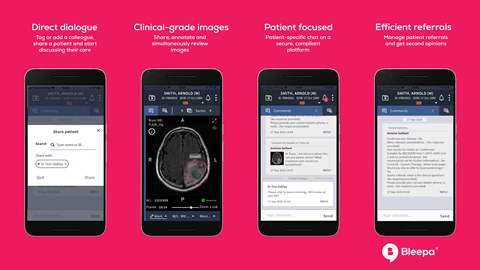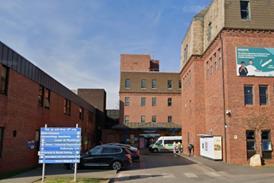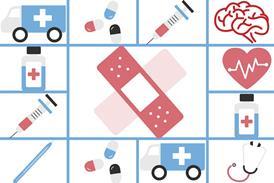Discover how digital infrastructure can transform multidisciplinary teamwork, reduce referral times, and enhance staff experience

When it comes to understanding how the health service can best address its most urgent challenges, it is difficult to find a more succinct analysis than that offered by Patricia Hewitt earlier this year.
Sponsored by
In her review of England’s integrated care systems, the former health secretary wrote that the challenges facing our healthcare system can only be effectively tackled by “many organisations working together, integrating care across the entire pathway and making the best use of available resources to achieve better, safer outcomes.” But what does this look like in practice?
Digital infrastructure for better multidisciplinary working
The right digital infrastructure is key to empowering clinicians to make the right decisions, with the right data at the right time. Once this is in place, it can underpin more effective communication, which is the key to improving multi-disciplinary team working.
Parts of the NHS are already pioneering approaches that have improved multidisciplinary, multisite working within clinical teams, particularly in the field of diagnostics. Community diagnostic centres are emerging as a key way to increase efficiency while improving patients’ care. These teams have been rightly recognised within the Hewitt review as a hugely important part of meeting the care needs of local communities.
At Feedback Medical, our goal with Bleepa has always been to maximise system capacity in order to aid effective decision making – ensuring that professionals get the information they need in the most efficient way. That is why we have been working closely with Queen Victoria Hospital (part of Sussex ICS) to deliver the first complete end-to-end symptom-based diagnostic pathway.
Here, Bleepa provides medics and care professionals with a fast, secure and convenient means of communicating with each other across and within sites, with seamless access to information from multiple clinical systems.
Data from February to December 2022 found that average referral-to-treatment waiting times sat at 39 days when Bleepa was used to manage the referral pathway for patients experiencing breathlessness, saving 69 per cent against the national RTT target. The data also shows that in 89 per cent of cases an outpatient appointment isn’t required.
Smarter referrals and faster diagnoses
As we provide the ability to view and annotate medical grade clinical imaging, this makes collaborating on clinical decisions much easier.
Staff within the health service understand only too well the pressures that come from trying to move patients along care pathways as quickly and as safely as possible within a heavily target-driven environment.
Since 2021 we have seen an increased national focus on speeding up cancer diagnosis and treatment, through the introduction of Faster Diagnostic Standards, alongside broader pressures to reduce elective care backlogs.
That is why improving the ability of clinical teams to collaborate digitally is particularly important. Whether we’re talking about condition or symptom-based diagnostic pathways, the quality of collaboration that the platform enables has led to faster clinical response and referral times in a range of clinical settings.
Last month an independent review of the Northern Care Alliance Foundation Trust’s use of Bleepa across a range of key clinical pathways revealed dramatic reductions in the time from submission of a referral to first review.
The review of 10,000 patient referrals made using the platform from July 2021 to April 2023 saw a reduction of almost 75 per cent in average referral times when compared to the paper-based systems the trust was using across the same sites prior to rolling out Bleepa.

Fewer pain points mean better staff experience
Better communication between clinicians and care staff means that those pain points that patients and clinicians alike face can be reduced, leading to better, faster patient care.
The same review also found that the vast majority of surveyed staff (76 per cent) said that using Bleepa, which offers the kind of user experience more usually associated with popular consumer messaging apps, saved them time when managing referrals, as compared to previous referral methods. By using Bleepa, four out of every five of these professionals also found a broader improvement in staff communications.
Using resources more efficiently and enabling care teams to work better together is one of the most immediate ways that system performance and patient experience can be boosted. That can start by facilitating fast, safe and easy access to diagnostics data, referrals and clinical imaging from the palm of a clinician’s hand.
Find out more about how Bleepa can help you to improve collaboration across care settings and deliver better, faster care.


























